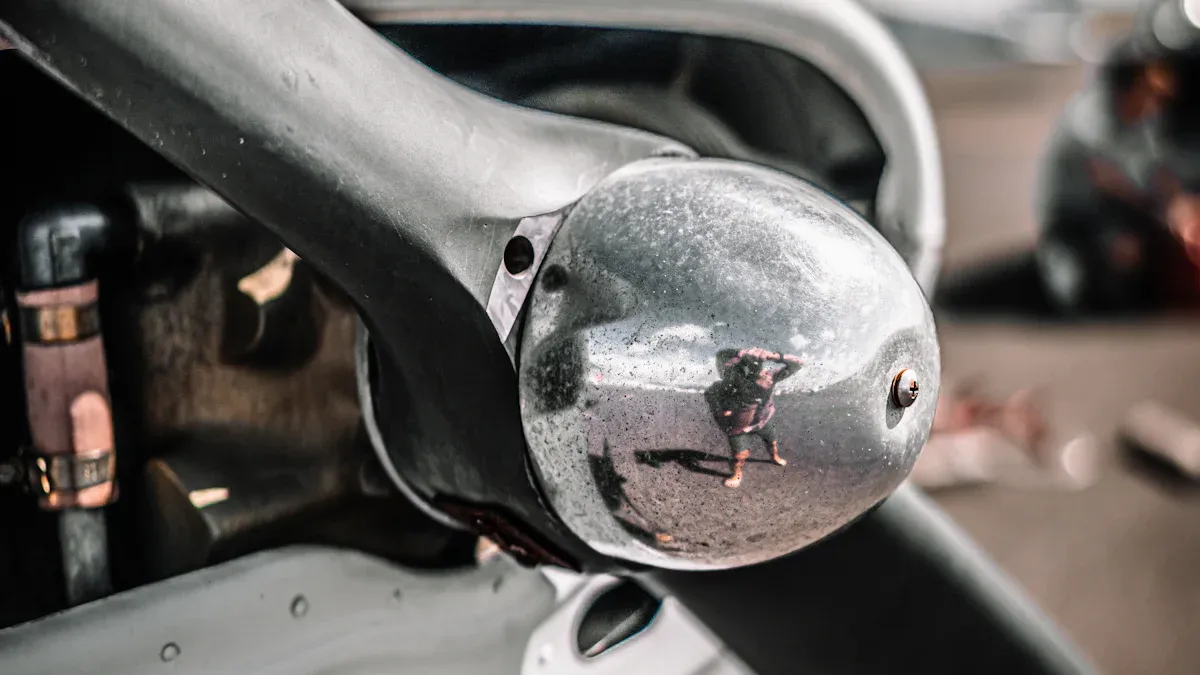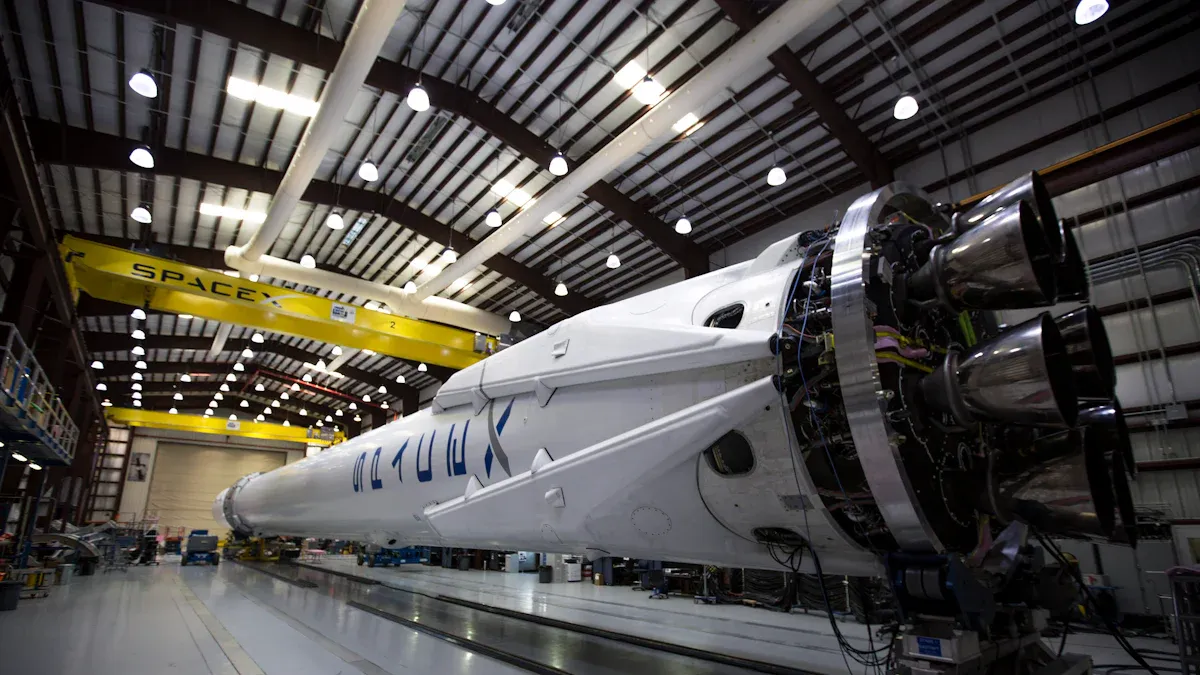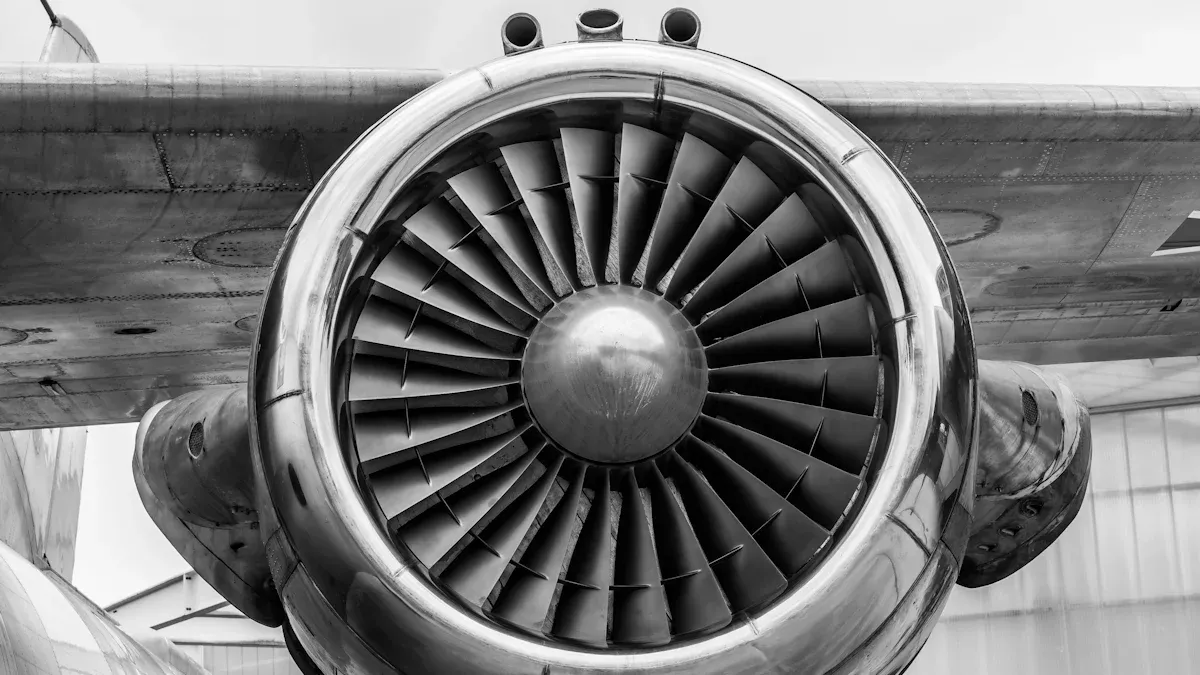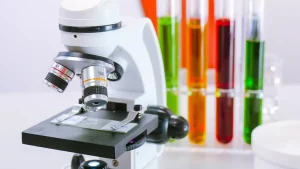
TaC coating, or Tantalum Carbide coating, acts as a protective shield for aerospace components. You can rely on it to guard parts against extreme heat and harsh conditions. Its unique properties include excellent thermal resistance, remarkable durability, and strong chemical stability. For example, applying tac coating on graphite enhances its performance under intense temperatures. This makes tic tac coating a game-changer in high-temperature aerospace environments.
Key Takeaways
- TaC coating handles high heat, keeping aerospace parts safe longer.
- It is strong and stops damage, helping parts like turbine blades work well.
- TaC coating blocks rust and decay, protecting parts from harm and making them last.
What is TaC Coating?
Composition and Structure of TaC
Tantalum Carbide (TaC) is a compound formed by combining tantalum and carbon atoms. This material belongs to a group of ceramics known as transition metal carbides. Its structure consists of a tightly packed lattice of tantalum and carbon atoms, which gives it exceptional strength and stability. You’ll find that this unique arrangement allows TaC to withstand extreme temperatures without breaking down.
The atomic structure of TaC contributes to its high melting point, which exceeds 6,000°F (about 3,300°C). This makes it one of the most heat-resistant materials available. Additionally, its dense and uniform composition ensures that it can endure mechanical stress and resist deformation. These characteristics make TaC an ideal choice for aerospace applications where components face intense heat and pressure.
Unique Properties of TaC Coating
TaC Coating stands out due to its remarkable properties. First, it offers unparalleled thermal resistance. When applied to aerospace components, it acts as a barrier against extreme heat, ensuring that the underlying material remains intact. This property is crucial for parts like turbine blades and rocket nozzles, which operate in high-temperature environments.
Second, TaC Coating provides exceptional durability. Its hard surface resists wear and tear, even under constant friction or mechanical stress. This means you can rely on it to extend the lifespan of critical aerospace components. Furthermore, its chemical stability ensures that it does not react with other substances, even in harsh environments. For example, it resists oxidation, which prevents corrosion and degradation over time.
Another notable feature is its ability to maintain performance under rapid temperature changes. Aerospace components often experience sudden shifts in temperature, which can cause other materials to crack or fail. TaC Coating, however, remains stable, providing consistent protection. These unique properties make it a game-changer in the aerospace industry, where reliability and performance are non-negotiable.
Why High-Temperature Environments Demand TaC Coating

Challenges of High-Temperature Aerospace Applications
High-temperature aerospace environments present unique challenges that can compromise the performance and safety of components. When you think about jet engines, rocket nozzles, or spacecraft, these parts operate under extreme heat, often exceeding thousands of degrees Fahrenheit. Such intense conditions can weaken materials, causing them to deform, crack, or even fail entirely.
Thermal stress is one of the biggest hurdles. Rapid temperature changes, like those experienced during takeoff or re-entry, can cause materials to expand and contract unevenly. This leads to structural fatigue and, eventually, failure. Additionally, high temperatures accelerate oxidation, a chemical reaction where materials react with oxygen in the air. Oxidation weakens the surface, making it prone to corrosion and reducing its lifespan.
Another challenge is wear and tear caused by friction. Moving parts, such as turbine blades, experience constant mechanical stress. Over time, this friction erodes the surface, reducing efficiency and increasing the risk of failure. In aerospace applications, even a small defect can have catastrophic consequences. You need materials that can withstand these harsh conditions without compromising performance.
How TaC Coating Addresses These Challenges
TaC Coating offers a reliable solution to the challenges of high-temperature aerospace applications. Its exceptional thermal resistance acts as a shield, protecting components from extreme heat. When applied to parts like turbine blades or rocket nozzles, it prevents heat from penetrating the underlying material. This ensures that the component maintains its structural integrity, even in the most demanding environments.
The coating also combats thermal stress. Its ability to remain stable under rapid temperature changes reduces the risk of cracking or deformation. You can trust it to provide consistent protection, even during sudden shifts in temperature. This makes it an ideal choice for aerospace components that face fluctuating heat levels.
Oxidation and corrosion are no match for TaC Coating. Its chemical stability prevents it from reacting with oxygen or other substances, even at high temperatures. This protective barrier extends the lifespan of components, saving you from costly repairs or replacements. Additionally, its hard surface resists wear and tear caused by friction. This durability ensures that moving parts, like jet engine components, continue to perform efficiently over time.
By addressing these challenges, TaC Coating enhances the reliability and safety of aerospace components. It allows you to push the boundaries of technology, enabling aircraft and spacecraft to operate in environments that were once considered impossible.
Key Benefits of TaC Coating for Aerospace Components
Thermal Resistance and Heat Shielding
You need aerospace components that can handle extreme heat without losing their strength. TaC Coating provides exceptional thermal resistance, making it a reliable choice for high-temperature environments. It acts as a heat shield, protecting critical parts like turbine blades and rocket nozzles from intense temperatures. This coating prevents heat from penetrating the material underneath, ensuring the component remains stable and functional. By using TaC Coating, you can extend the lifespan of these parts and improve their performance in demanding conditions.
Durability and Wear Resistance
Aerospace components often face constant friction and mechanical stress. Over time, this wear and tear can reduce their efficiency. TaC Coating offers a hard, durable surface that resists damage from friction. This durability ensures that moving parts, such as jet engine components, maintain their performance over long periods. You can rely on this coating to reduce maintenance needs and lower the risk of unexpected failures. Its wear resistance makes it an essential feature for aerospace applications.
Oxidation and Corrosion Protection
High temperatures accelerate oxidation, which weakens materials and leads to corrosion. TaC Coating provides a protective barrier that prevents oxidation, even in extreme environments. Its chemical stability ensures that it does not react with oxygen or other substances. This protection keeps aerospace components free from corrosion, enhancing their reliability and safety. By choosing TaC Coating, you safeguard your equipment against environmental damage and extend its operational life.
Applications of TaC Coating in Aerospace

Turbine Blades and Jet Engines
Turbine blades in jet engines face extreme heat and mechanical stress during operation. These components must endure temperatures that can exceed 2,000°F while maintaining their structural integrity. TaC Coating provides a protective barrier that shields turbine blades from intense heat. It prevents thermal damage and reduces wear caused by constant friction. By applying this coating, you can enhance the efficiency and lifespan of jet engine components. This ensures reliable performance even in the most demanding conditions.
Rocket Nozzles and Spacecraft Components
Rocket nozzles and spacecraft components operate in some of the harshest environments imaginable. They encounter rapid temperature changes, high-speed friction, and exposure to reactive gases. TaC Coating plays a critical role in protecting these parts. Its thermal resistance prevents heat from degrading the material, while its chemical stability resists oxidation and corrosion. This makes it an essential choice for ensuring the durability and safety of space exploration equipment.
High-Temperature Industrial Furnaces and Reactors
Industrial furnaces and reactors used in aerospace manufacturing also benefit from TaC Coating. These systems often operate at extreme temperatures to process materials like metals and ceramics. The coating provides a heat-resistant layer that protects furnace linings and reactor components from thermal stress and chemical reactions. This improves their efficiency and reduces maintenance needs, saving you time and resources in the long run.
Comparison with Other Coatings
TaC Coating vs. Ceramic Coatings
When comparing TaC coating to ceramic coatings, you’ll notice key differences in performance and application. Ceramic coatings are widely used for their thermal insulation properties. They reduce heat transfer effectively, making them suitable for moderate-temperature environments. However, they often lack the extreme heat resistance that TaC coating provides.
TaC coating excels in high-temperature aerospace applications. Its melting point exceeds 6,000°F, far surpassing most ceramic coatings. This makes it ideal for components exposed to intense heat, such as rocket nozzles and turbine blades. Additionally, TaC coating offers superior durability. While ceramic coatings can crack under mechanical stress, TaC coating resists wear and deformation.
Tip: If your application involves extreme heat and mechanical stress, TaC coating is the better choice. Ceramic coatings work well for less demanding conditions.
TaC Coating vs. Thermal Barrier Coatings
Thermal barrier coatings (TBCs) are another alternative for protecting aerospace components. These coatings focus on insulating materials from heat rather than directly resisting it. They often consist of multiple layers, including a ceramic topcoat and a metallic bond coat. While TBCs perform well in reducing heat transfer, they may degrade over time due to oxidation or thermal cycling.
TaC coating, on the other hand, provides a single-layer solution with unmatched thermal resistance. It not only withstands extreme temperatures but also resists oxidation and corrosion. This makes it more reliable for long-term use in harsh environments.
Note: Choose TaC coating when you need a robust, all-in-one solution for extreme conditions. TBCs are better suited for applications prioritizing insulation over durability.
TaC coating serves as a vital shield for aerospace components, protecting them from extreme heat and wear. You can rely on it to enhance the durability and performance of critical parts. Its unmatched properties pave the way for advancements in aerospace technology and inspire future innovations across industries requiring high-temperature solutions.
FAQ
What makes TaC coating better than other high-temperature coatings?
TaC coating offers unmatched thermal resistance, durability, and chemical stability. It outperforms alternatives like ceramic or thermal barrier coatings in extreme aerospace environments.
Tip: Use TaC coating for components exposed to intense heat and mechanical stress.
Can TaC coating be applied to all aerospace components?
You can apply TaC coating to most high-temperature components, including turbine blades and rocket nozzles. However, its suitability depends on the material and operating conditions.
How does TaC coating improve component lifespan?
TaC coating protects against heat, wear, and oxidation. This reduces damage and maintenance needs, ensuring components last longer in demanding aerospace applications.
🛠️ Note: Regular inspections ensure the coating remains effective over time.






